“Kenyan cuisine is an amalgamation of ethnic, Indian and Arabic cuisine which have been slightly modified over centuries to suit our needs,” says Adagala, who made this meatball tikka masala with mince, tumeric, cumin, peppers and breadcrumbs.
Photos: The African dishes you should be eating
Charlene Shoko’s blog zimbokitchen.com aims “to solve the daily pains of the Zimbabwean home chef, helping people prepare traditional Zimbabwean cuisine”. “Google organic search has also enabled us to grow — any search on Zimbabwean food brings up ZimboKitchen in the top results,” Shoko adds.
Hide Caption
11 of 19

Photos: The African dishes you should be eating
Amacimbi (mopane worms) are popular in Zimbabwe. Here they have been given a modern twist, cooked with sweet chilli sauce and fresh lemon.
Hide Caption
12 of 19

Photos: The African dishes you should be eating
Miriam Kinunda makes dishes with local ingredients such as these Amaranth leaves. She shares the recipes on her website, her YouTube channel and in her cookbooks.
Hide Caption
13 of 19

Photos: The African dishes you should be eating
Cooked green bananas is a staple in some regions in Northern parts of Tanzania, according to Kinunda.
Hide Caption
14 of 19

Photos: The African dishes you should be eating
Hong Kong-based Helina Tesega is bringing dishes influenced by her mum’s Ethiopian home cooking to Asia through her website, Eat Ethio, and supper clubs.
Hide Caption
15 of 19

Photos: The African dishes you should be eating
In Ethiopian dining, many meals are served with injera, a spongy flat bread, and a selection of curries and stews, as in this platter prepared by Tesega.
Hide Caption
16 of 19

Photos: The African dishes you should be eating
Nargisse Benkabbou, 29, launched her blog, My Moroccan Food, a year ago. When she began, she frequently posted pictures of her food, like this Aubergine and pumpkin tagine, on social media.
Hide Caption
17 of 19

Photos: The African dishes you should be eating
“I am a Moroccan girl, I grew up in Brussels in a family seriously obsessed with food,” says Benkabbou, who cooked this aubergine and pumpkin tagine.
Hide Caption
18 of 19

Photos: The African dishes you should be eating
“There is something charming and alluring about Moroccan cuisine,” says blogger Benkabbou, who is a trained cook.
Hide Caption
19 of 19

Photos: The African dishes you should be eating
The Rolex, a rolled chapatti containing a fried egg and vegetables, is wildly popular in Uganda, but little known outside the country. “Rolex is popular because it is a cheap filling meal that can be found on almost every street,” says Ugandan food blogger Sophie Musoki.
Hide Caption
1 of 19

Photos: The African dishes you should be eating
Zoe Adjonyoh started her business, Zoe’s Ghana Kitchen, after spending time in her grandmother’s kitchen in Ghana. Adjonyoh’s latest venture is a restaurant in a shipping container community project Pop Brixton, in South London, where she serves this goat curry.
Hide Caption
2 of 19

Photos: The African dishes you should be eating
Fried yam balls are also on the menu at Zoe’s Ghana Kitchen. Adjonyoh puts her own spin on traditional Ghanian recipes, inspired by the famous Kaneshi street market in Accra.
Hide Caption
3 of 19

Photos: The African dishes you should be eating
Bone in chicken light soup, served with fufu is a dish that shows off Adjonyoh’s Ghanian roots. Fufu is a dough-like dish made with cassava that many Ghanian’s consider a staple.
Hide Caption
4 of 19

Photos: The African dishes you should be eating
Adjonyoh, 38, started off selling groundnut soup from a makeshift stall selling out of her studio flat at the Hackney Wicked Festival almost five years ago. Since then she has taken her food to street food markets and pop-ups across London and Berlin.
Hide Caption
5 of 19

Photos: The African dishes you should be eating
These griddled lamb cutlets, cooked by Adjonyoh, are served with a spicy groundnut sauce. She makes her groundnut stew with peanut butter, goat, herring, salmon, crabs, onion, tomatoes, garlic and hot peppers.
Hide Caption
6 of 19

Photos: The African dishes you should be eating
24-year-old Kaluhi Adagala is a food blogger based in Nairobi, Kenya. Her dishes have a heavy Kenyan influence, she takes traditional recipes and makes them her own, then shares them on her blog Kaluhi’s Kitchen.
Hide Caption
7 of 19

Photos: The African dishes you should be eating
Adagala’s sweet and sour pork with pineapple salsa is made with pork marinated in passion fruit, and a salsa made from pineapples, cayenne pepper, onions and coriander.
Hide Caption
8 of 19

Photos: The African dishes you should be eating
With over 34, 000 followers across her social media accounts, Adagala has been able to secure brand partnerships with businesses such as the Nairobi Food Market, where she used her online platforms to market the event. Her stunning photography, such as this image of her mango mint salad, is one of the reasons she has over 20,000 followers on Instagram at the time of writing.
Hide Caption
9 of 19

Photos: The African dishes you should be eating
“Kenyan cuisine is an amalgamation of ethnic, Indian and Arabic cuisine which have been slightly modified over centuries to suit our needs,” says Adagala, who made this meatball tikka masala with mince, tumeric, cumin, peppers and breadcrumbs.
Hide Caption
10 of 19

Photos: The African dishes you should be eating
Charlene Shoko’s blog zimbokitchen.com aims “to solve the daily pains of the Zimbabwean home chef, helping people prepare traditional Zimbabwean cuisine”. “Google organic search has also enabled us to grow — any search on Zimbabwean food brings up ZimboKitchen in the top results,” Shoko adds.
Hide Caption
11 of 19

Photos: The African dishes you should be eating
Amacimbi (mopane worms) are popular in Zimbabwe. Here they have been given a modern twist, cooked with sweet chilli sauce and fresh lemon.
Hide Caption
12 of 19

Photos: The African dishes you should be eating
Miriam Kinunda makes dishes with local ingredients such as these Amaranth leaves. She shares the recipes on her website, her YouTube channel and in her cookbooks.
Hide Caption
13 of 19

Photos: The African dishes you should be eating
Cooked green bananas is a staple in some regions in Northern parts of Tanzania, according to Kinunda.
Hide Caption
14 of 19

Photos: The African dishes you should be eating
Hong Kong-based Helina Tesega is bringing dishes influenced by her mum’s Ethiopian home cooking to Asia through her website, Eat Ethio, and supper clubs.
Hide Caption
15 of 19

Photos: The African dishes you should be eating
In Ethiopian dining, many meals are served with injera, a spongy flat bread, and a selection of curries and stews, as in this platter prepared by Tesega.
Hide Caption
16 of 19

Photos: The African dishes you should be eating
Nargisse Benkabbou, 29, launched her blog, My Moroccan Food, a year ago. When she began, she frequently posted pictures of her food, like this Aubergine and pumpkin tagine, on social media.
Hide Caption
17 of 19

Photos: The African dishes you should be eating
“I am a Moroccan girl, I grew up in Brussels in a family seriously obsessed with food,” says Benkabbou, who cooked this aubergine and pumpkin tagine.
Hide Caption
18 of 19

Photos: The African dishes you should be eating
“There is something charming and alluring about Moroccan cuisine,” says blogger Benkabbou, who is a trained cook.
Hide Caption
19 of 19

Photos: The African dishes you should be eating
The Rolex, a rolled chapatti containing a fried egg and vegetables, is wildly popular in Uganda, but little known outside the country. “Rolex is popular because it is a cheap filling meal that can be found on almost every street,” says Ugandan food blogger Sophie Musoki.
Hide Caption
1 of 19

Photos: The African dishes you should be eating
Zoe Adjonyoh started her business, Zoe’s Ghana Kitchen, after spending time in her grandmother’s kitchen in Ghana. Adjonyoh’s latest venture is a restaurant in a shipping container community project Pop Brixton, in South London, where she serves this goat curry.
Hide Caption
2 of 19

Photos: The African dishes you should be eating
Fried yam balls are also on the menu at Zoe’s Ghana Kitchen. Adjonyoh puts her own spin on traditional Ghanian recipes, inspired by the famous Kaneshi street market in Accra.
Hide Caption
3 of 19

Photos: The African dishes you should be eating
Bone in chicken light soup, served with fufu is a dish that shows off Adjonyoh’s Ghanian roots. Fufu is a dough-like dish made with cassava that many Ghanian’s consider a staple.
Hide Caption
4 of 19

Photos: The African dishes you should be eating
Adjonyoh, 38, started off selling groundnut soup from a makeshift stall selling out of her studio flat at the Hackney Wicked Festival almost five years ago. Since then she has taken her food to street food markets and pop-ups across London and Berlin.
Hide Caption
5 of 19

Photos: The African dishes you should be eating
These griddled lamb cutlets, cooked by Adjonyoh, are served with a spicy groundnut sauce. She makes her groundnut stew with peanut butter, goat, herring, salmon, crabs, onion, tomatoes, garlic and hot peppers.
Hide Caption
6 of 19

Photos: The African dishes you should be eating
24-year-old Kaluhi Adagala is a food blogger based in Nairobi, Kenya. Her dishes have a heavy Kenyan influence, she takes traditional recipes and makes them her own, then shares them on her blog Kaluhi’s Kitchen.
Hide Caption
7 of 19

Photos: The African dishes you should be eating
Adagala’s sweet and sour pork with pineapple salsa is made with pork marinated in passion fruit, and a salsa made from pineapples, cayenne pepper, onions and coriander.
Hide Caption
8 of 19

Photos: The African dishes you should be eating
With over 34, 000 followers across her social media accounts, Adagala has been able to secure brand partnerships with businesses such as the Nairobi Food Market, where she used her online platforms to market the event. Her stunning photography, such as this image of her mango mint salad, is one of the reasons she has over 20,000 followers on Instagram at the time of writing.
Hide Caption
9 of 19

Photos: The African dishes you should be eating
“Kenyan cuisine is an amalgamation of ethnic, Indian and Arabic cuisine which have been slightly modified over centuries to suit our needs,” says Adagala, who made this meatball tikka masala with mince, tumeric, cumin, peppers and breadcrumbs.
Hide Caption
10 of 19







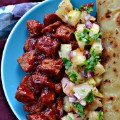

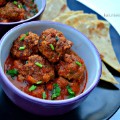

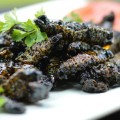

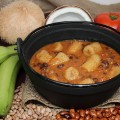



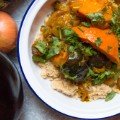

Story highlights
- Doro wat, fufu and even Rolex are all African dishes taking off around the world, thanks to online entrepreneurs.
- African chefs are promoting their cuisines via blogs, eBooks and pop up restaurants.
(CNN)Sweet ‘n’ sour pork. Lamb bhuna. Cheese quesadillas. Pasta con pomodoro.
Famous dishes from Asia, Europe and the Americas have all left their indelible mark on menus around the world.
African cuisines, however, have been slow to catch on globally.
In Uganda, for example, a dish called “the Rolex” — a rolled chapatti containing a fried egg and vegetables — is wildly popular, but little known outside the country.
“Rolex was started by a few university kids,” says Jon Blanc, the director of Ugandan tour company Kabiza Wilderness Safaris.
“Today all over Uganda men cook them on the street. In Rwanda where no street food is allowed, it is served in restaurants.”
Now, chefs from the African continent, and beyond, are promoting dishes from their home nations in very different ways online — and making a living from it.
Here’s how they are doing it — and, of course, what you should be eating.
ZimboKitchen (Zimbabwe)
Who: Charlene Rumbidzai Shoko, 31
Key Zimbabwean dishes: Sadza, a thickened porridge served at most meals with vegetables and stew; Nhedzi, a wild mushroom soup.
How: Shoko’s blog zimbokitchen.com aims “to solve the daily pains of the Zimbabwean home chef, helping people prepare traditional Zimbabwean cuisine”.
“Google organic search has also enabled us to grow — any search on Zimbabwean food brings up ZimboKitchen in the top results,” Shoko adds.
Revenue streams: sales from themed recipe eBooks.
Why Zimbabwean food? It’s a custom to share dishes in Zimbabwean culture, and diners are encouraged to pace themselves and not to finish before the others.
Kaluhi’s Kitchen (Kenya)
Who: Kaluhi Adagala, 24
Key dishes: Ugali, a dense cornmeal paste; Irio, mashed green peas and potato; and Githeri, a corn and beans dish.
How: Based in Nairobi, Kenya, Adagala uses her blog to promote dishes with a heavy Kenyan influence.
“I take our beloved traditional recipes and reinvent them by adding … a much more global feel with ingredients that are locally available. My mission is to show the world Kenyan food and to put Kenyan food on the global culinary map.”
Revenue stream: brand partnerships, for example assisting with the marketing for Nairobi Food Market.
Why Kenyan food? “Kenyan cuisine is an amalgamation of ethnic, Indian and Arabic cuisine which have been slightly modified over centuries to suit our needs.
“With 42 tribes in our country, food preparation and methods borrows heavily from one tribe to the next which makes Kenyan food a celebration of diversity.”
Taste of Tanzania (Tanzania)
Who: Miriam Kinunda, 47
Key dishes: Ugali, a dense cornmeal paste; Nyama Choma, grilled meat; and chapati, a type of bread.
How: Kinunda’s Taste of Tanzania website, which she started off writing in Swahili, started gaining popularity in 2009.
Revenue stream: self-published books, YouTube channel and Taste of Tanzania spice brand.
Why Tanzanian food? “The Swahili people adapted to the cultures of the people that colonized them, from Persians, British, and Portuguese.
“You can find a few Swahili recipes that use the same names as some Persian or Indian recipes, but are prepared very differently.”
Eat Ethio (Ethiopia)
Who: Helina Tesega, 35
Key dishes: Injera, a spongy flat bread; wat, a spicy meat or vegetable stew; and Kitfo, marinated minced beef.
How: Based in Hong Kong, Tesega is bringing dishes influenced by her mum’s Ethiopian home cooking to Asia.
“There is little understanding [in China] of Ethiopia, its rich history, the people, the food and the culture … I provide a modern insight into all of this in a credible way.”
Revenue stream: supper clubs and catering events.
Why Ethiopian food? “I honestly think Ethiopian food is one of the most flavorsome of cuisines. It’s so distinctive,” Tesega says.
Berbere and niter kibbeh are key to Ethiopian cooking: berbere is a very hot blend of spices made from a large red chilli. Niter Kibbeh is a seasoned, clarified butter used in all kinds of dishes from meat to vegetables and eggs.
Zoe’s Ghana Kitchen (Ghana)
Who: Zoe Adjonyoh, 38
Key dishes: Jollof rice, a one-pot spiced rice dish; fufu, dough-like dish made with cassava; and kelewele, fried seasoned plantains.
How: Born to a Ghanaian father and Irish mother, Adjonyoh started her business after spending time in her grandmother’s kitchen in Ghana, and visiting the famous Kaneshi street market in Accra.
Revenue stream: pop-up restaurants in London and Berlin, catering and cookbooks.
Why Ghanian food? There are some seriously cool venues. Adjonyoh’s latest venture is a restaurant in a shipping container community project Pop Brixton, in South London.













